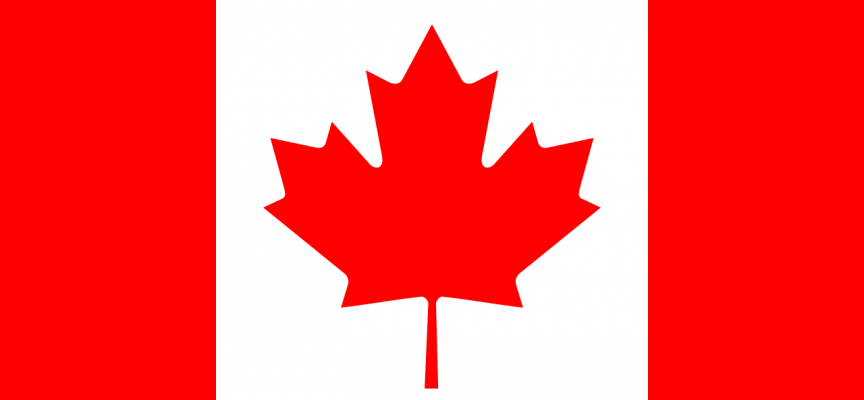Here’s another installment in our ‘Team Canada MXON Stories’ series.
Team Canada MXON Stories – The 2004 Re-Boot
By Carl Bastedo
Legends of Canadian Motocross, in conjunction with directmotocross.com, is in the process of documenting a History of Canada at the Motocross of Nations. We will release various stories, pictures, video etc. in a random fashion before combing all the information on the Legends website under it’s own section. You may have already read the story of Team Canada in Ernee France in 2005 posted on Direct Motocross. The first Team Canada to attend the Nations was in 1964. There is actual video footage of that event. This article describes the circumstances behind the re-boot of Canada’s effort by Carl Bastedo in 2004.
In 2001, the CMA, through its appointed Manager, arranged for a team of three riders to represent Canada at the Motocross Des Nations at the historic Circuit Citadel in Namur, Belgium.
The riders, Jean-Sebastien Roy, Marco Dubé and Darcy Lange, had agreed to participate in the event. After a meeting of the riders’ sponsors/agents at Walton, the riders withdrew from the team.
One of those sponsors/agents issued a press release saying that the “riders had to make a stand in hopes of getting the FIM to acknowledge the CMRC.” This showed how little they knew of how the FIM operates. The sponsors/agents and the CMRC actually believed they had some clout with the FIM.
The CMA then named an alternate team of Simon Homans, Jason Frenette and Julian Cerny.
Letter after letter followed blasting the CMA’s appointed Manager and the CMA, blaming them for everything but 9/11.
I followed all this as I have always had an interest, in a tradition started in the 60’s, of Canadian Motocross riders being represented in Europe. I have always felt this helped in making Canada part of the International Motocross Community as well as giving Canadian Riders the opportunity to compete at the highest level of the sport.
The Motocross of Nations itself, although somewhat tarnished in Canada by the CMA, who the FIM appointed as its affiliate in 1950, was still important in my mind in that it put Canada and its Riders on the World Stage. The event had also been declining in importance as were the Grand Prixs in general. All this was mainly due to the steep decline in World Wide Motorcycle Sales during the 80’s and 90’s.
As we approached 2004, it didn’t seem Canada was going to have a Team at the Nations anytime soon. Everyone was totally hung up on the fact that the only way Canada could enter a Team in the event was to do so through the CMA. Page after page of memos and articles where written about how to get around this or circumvent their authority as the FIM’s affiliate in Canada.
One of the problems they failed to recognize was that the FIM was very unlikely to affiliate with an association that was not totally a “Not For Profit” Association with a proper constitution and Board of Directors. They also where unlikely to affiliate with any organization that was controlled by the Motorcycle Industry, although the long standing disdain of the Industry by the FIM was starting to change in 2004. They also failed to recognize that “motocross” was not the biggest part of the FIM’s mandate, especially with its affiliates.
I wanted to approach the whole issue entirely from a different perspective. Why spend hours and days arguing about who was the FIM’s affiliate? My goal was to have a Team represent Canada at the Motocross of Nations. If that meant that I had to ask the CMA if they would enter a Team if I could put an effort together, then so be it.
I asked, and the CMA agreed, in the spring of 2004. They agreed to enter the Team 30 days prior to the event which is the deadline. I had to show them a signed letter from the riders saying they would agree to attend the event if selected (they where leery after what happened in 2001). I also needed to show them that sufficient funds where available to cover the minimum expenses involved: Air Flights, Hotels, Food, Pit Presence and the availability of Bikes or the shipping thereof. The reason for this is they had a contact in Quebec who had agreed to take a team to the Nations a year or so after the 2001 debacle. In spite of his good intentions, the whole arrangement fell through because the money could not be raised.
The MXON had declined in respect around the World and the US had stated they would not be attending the event in Lierop, The Netherlands. We still moved forward with our effort and were able to re-boot Canada’s involvement in the MXON and attend the 2004 event. Little did we know that the Lierop event would be a turning point in the MXON’s history and begin to re-establish the event as the greatest Motocross event on the World Calendar.




